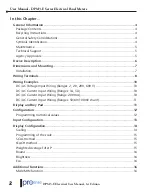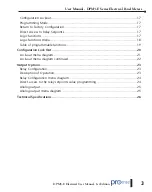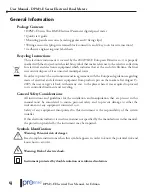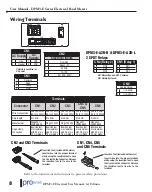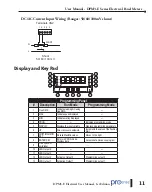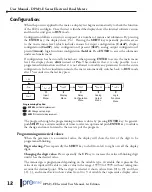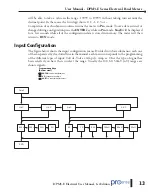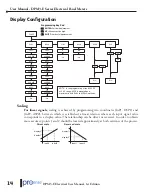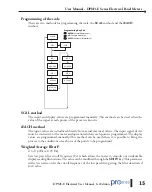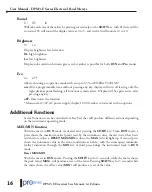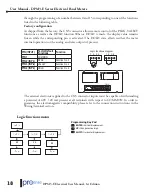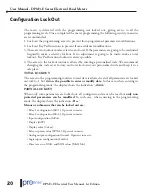
DPM3-E Electrical User Manual, 1st Edition
User Manual - DPM3-E Series Electrical Panel Meters
9
WARNING: If this instrument is not installed and used in accordance with these
instructions, the protection provided against hazards may be impaired.
To meet the requirements of EN 61010-1 standard, where the unit is permanently connected to
main supply, it is obligatory to install a circuit breaking device easily reach by the operator and
clearly marked as the disconnecting device.
To guarantee electromagnetic compatibility, the following guidelines should be kept in mind:
• Power supply wires should be separately routed from signal wires and never run in the same conduit.
• Use shielded cable for signal wiring.
• Cables section should be
≥
0.25 mm².
Before connecting signal wires, signal type and input range should be verified to be within the
right limits. Do not connect simultaneously more than one input signal to the meter.
CAUTION:
Connect only one input signal range to the meter. Hazardous signal levels may be
present on unused inputs.
CAUTION:
The isolation rating of the input common of the meter with respect to the option
card common and to the Logical Functions common (if used) is 250 Vrms and 500 Vrms with
respect to AC Power (terminals 1 and 2 of connector CN1). To be certain that the ratings are
not exceded, these voltages should be verified by a high-voltage meter before wiring the meter.
CAUTION:
1. Where possible, connect the neutral side of the signal (including current shunts) to the input
common of the meter. If the input signal is sourced from an active circuit, connect the lower
impedance (usually circuit common) to the imput signal common of the meter. (pin 1 CN2)
2. For phase to phase line monitoring where a neutral does not exist, or for any other signal input
in which the isolation voltage rating is exceeded, an isolating potential transformer must be
used to isolate the input voltage from earth. With the transformer, the input common of the
meter can then be earth referenced for safety.
3. When measuring line currents, the use of a current transformer is recommended. If using
external current shunts, insert the shunt in the neutral return line. If the isolation voltage
rating is exceeded, the use of an isolating current transformer is necessary.


